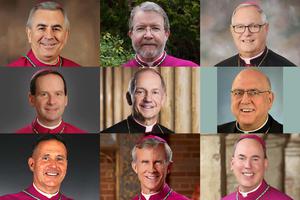Pope Francis Blesses Lambs on St. Agnes’ Feast Day
The time-honored custom precedes wool being used to make palliums, a vestment worn by metropolitan archbishops, which signify their unity with the Church of Rome.

VATICAN CITY — Pope Francis observed the feast of St. Agnes on Thursday with the time-honored custom of the blessing of lambs (video here), whose wool will be used to make palliums, a vestment worn by metropolitan archbishops, which signify their unity with the Church of Rome.
The two small lambs, traditionally less than a year old, were placed in baskets and carried to the Urban VIII Chapel in the Vatican’s Apostolic Palace Jan. 21, where they received the Holy Father’s blessing.
St. Agnes, whose name means “lamb” in Latin, was a young girl when she consecrated her virginity to God. Although stories of her martyrdom vary, tradition holds that the beautiful young girl was pursued by various men, whom she refused because of her promise to God.
Feeling slighted, these men then turned her over to Roman authorities, “outing” her as a Christian. She was then put to death by the sword — after refusing to give up her virginity or denounce her faith — at the young age of 12 or 13.
The young saint is buried in the basilica named for her, located on Rome’s Via Nomentana. Since she is mentioned in the Roman Canon, her association with the pallium is an important symbol of unity with the successor of St. Peter.
During the blessing of the lambs, one lamb wears a white crown symbolizing the saint’s purity, and the other lamb to wear a red crown, emblematic of her martyrdom.
St. Agnes is usually depicted as carrying a lamb in her arms, and she is the patron saint of young girls, engaged couples and victims of sexual assault.
When the sheep are shorn in the summer, religious sisters will collect the wool and use it to weave the palliums, which are white stoles with six black crosses worn by archbishops to show their unity with the Pope and their apostolic authority. The vestment dates back to at least the fifth century.
After the palliums are woven, they are kept in an urn at the tomb of St. Peter until the feast of Sts. Peter and Paul, when they are presented to the archbishops who were newly appointed in the last year.

















